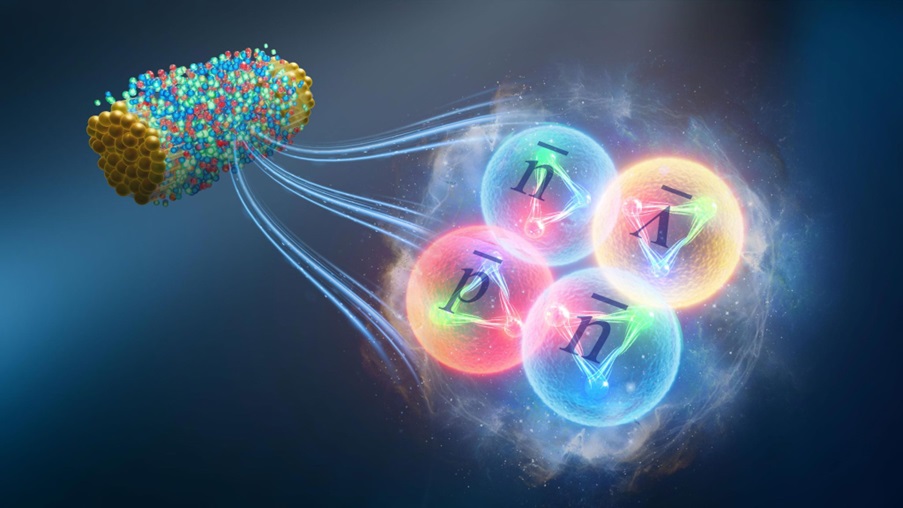Closer to understanding the matter-antimatter asymmetry

The STAR detector, which tracks thousands of particles produced by each ion collision at RHIC, weighs 1,200 tons and is roughly the size of a house. Photo: Brookhaven National Laboratory, Flickr, CC BY-NC-ND 2.0
A team from the WUT’s Faculty of Physics has published an article in Nature detailing the first experimental observation of an antihypernucleus. The research was conducted as part of the STAR experiment at the Relativistic Heavy Ion Collider (RHIC) at Brookhaven National Laboratory.
Researchers examining particle trails from six billion atomic nucleus collisions at the Relativistic Heavy Ion Collider (RHIC)—an "atom smasher" that simulates the conditions of the early universe — have discovered a new form of antimatter nucleus, the heaviest ever found. These exotic antimatter nuclei, composed of four antimatter particles—an antiproton, two antineutrons, and one antihyperon—are known as antihyperhydrogen-4.
Members of the STAR collaboration made this discovery by using their detector to analyze the remnants of the collisions. In their publication, they explained how these exotic antiparticles were used to investigate differences between matter and antimatter.
The early Universe was characterized by an asymmetry between the amounts of matter and antimatter produced. This imbalance determined the structure of the Universe as we know it today—a Universe dominated by matter. The origin of this asymmetry remains unknown. High-energy nuclear collisions recreate conditions similar to those just microseconds after the Big Bang, with roughly equal amounts of matter and antimatter. Much of the produced antimatter undergoes annihilation, making these collisions an effective tool for experimentally creating and examining heavy antimatter nuclei. This research holds promise for uncovering answers to the questions about the matter-antimatter asymmetry.
Researchers involved in the experiment, led by Prof. Hanna Zbroszczyk, include Prof. Daniel Kikoła, Debasish Mallick, PhD, Diana Pawłowska, PhD, Prof. Jan Pluta, Priyanka Roy Chowdhury, MA, Srikanta Tripathy Kumar, PhD, and Daniel Wielanek, PhD. They participated in research leading to the observation of antimatter in the form of antihyperhydrogen-4. They also measured the lifetimes of these antihypernuclei and compared them with the lifetimes of their corresponding hypernuclei, thereby testing the symmetry between matter and antimatter.
You can read about our researchers' work on the Nature website.
Source: fizyka.pw.edu.pl








